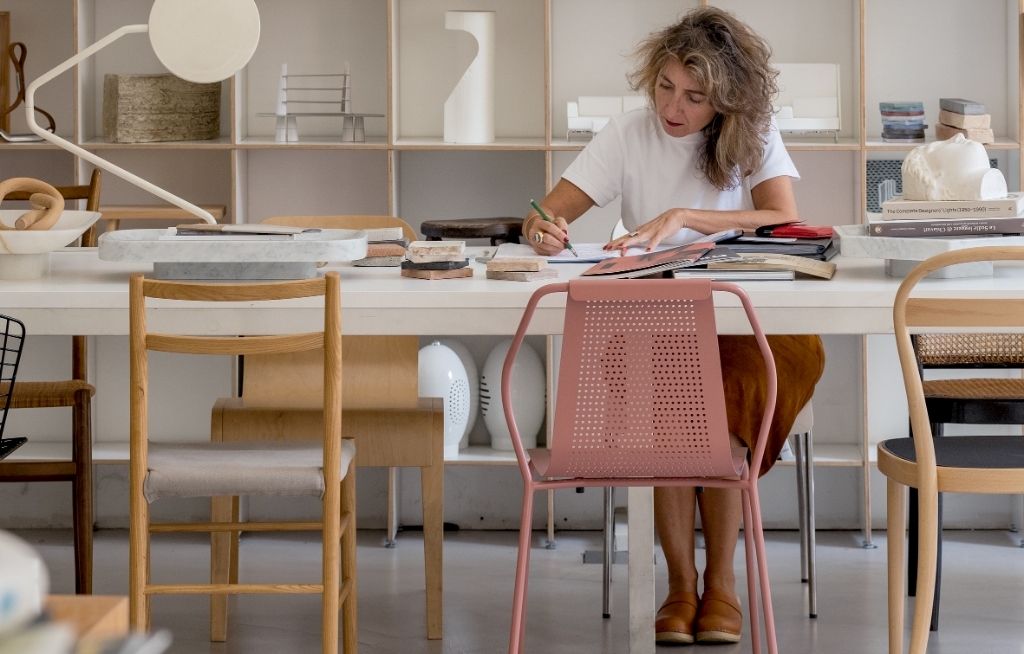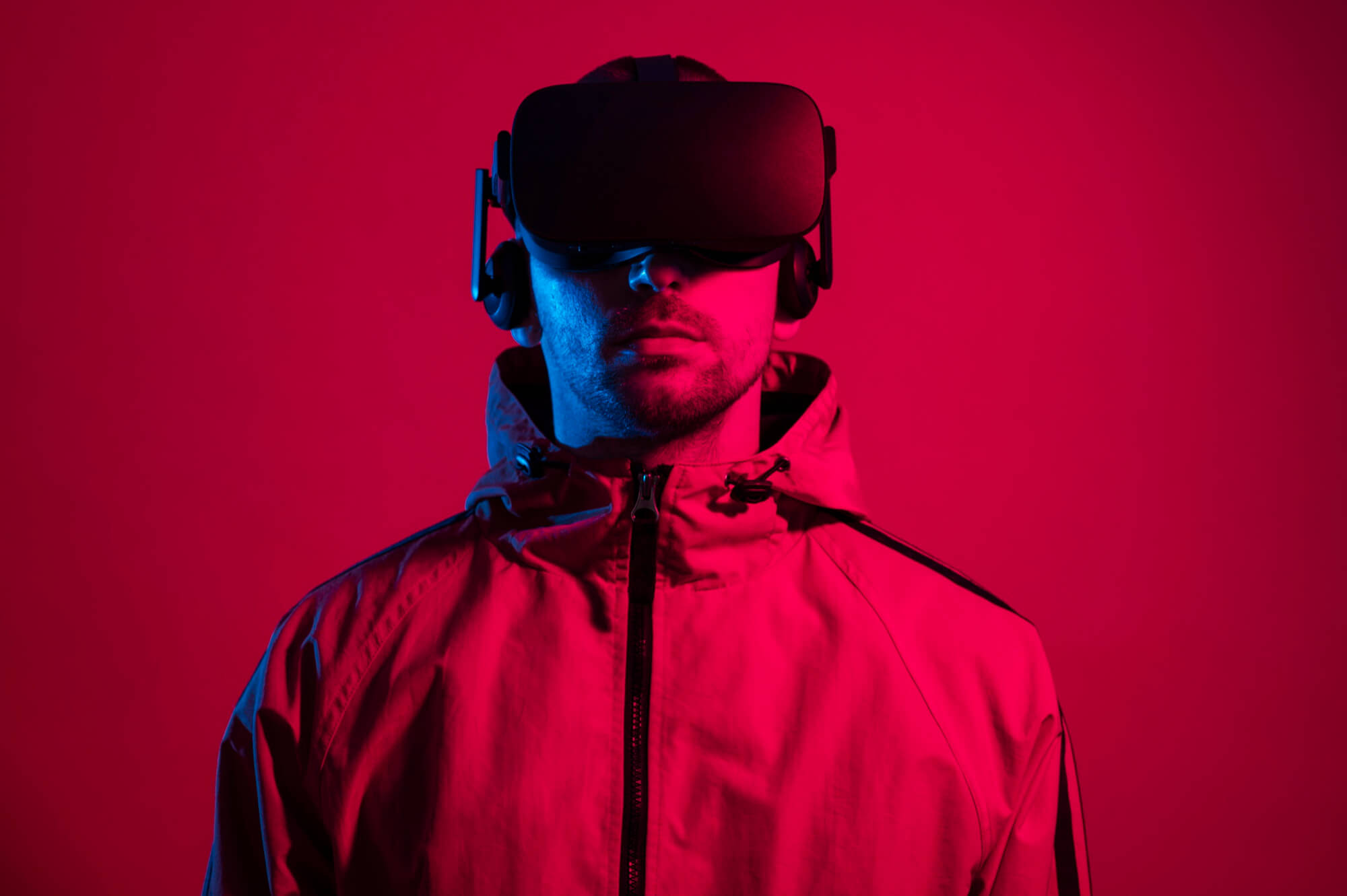In an exclusive interview with Design Connect, Marialaura Irvine, Creative Director of Studio Irvine, shares her vision of timeless and sustainable design shaped by material awareness, architectural thinking, and quiet impact. She reflects on evolving the Irvine legacy, collaborating with Arper, and creating furniture that adapts to the rhythms of modern life. From reimagining icons like Juno 02 to embracing a research-driven, emotionally resonant approach, Irvine reveals how design can be both purposeful and poetic.
Your design approach has been described as a ‘radical whisper,’ emphasizing materiality, ethics, and timelessness. How has this philosophy evolved since taking leadership of Studio Irvine in 2013, and how might it align with Arper’s commitment to responsible design?
Since taking over Studio Irvine, my approach has become increasingly rooted in material ethics and a sense of temporal responsibility. The idea of the Radical Whisper is about creating designs that don’t need to shout to make an impact; discreet yet radical in their integrity, silent but enduring. With Arper, this alignment has felt natural. We share a belief in thoughtful design: improving what already exists, refining it over time, and letting materials guide our decisions. The redesign of Juno 02 is one example of this approach: not a reinvention, but a mindful evolution through more sustainable materials and smarter production. But beyond that, it’s about always asking: how can this object live longer, adapt better, and stay relevant in a changing world?
Your architectural education in Naples under Riccardo Dalisi and later strategic design studies at Politecnico di Milano have given you a unique perspective. How do these different educational backgrounds influence your approach to furniture design today?
Studying architecture in Naples taught me to respect the fundamentals of design and embrace poetic freedom in expression. I learned to see design as a cultural and humanistic act, deeply connected to material, place and emotion. Later, my Strategic Design studies at the Politecnico di Milano added a different layer: structure, foresight and the tools to integrate communication, positioning and systems thinking into the design process.
These two worlds – one intuitive and rooted in tradition, the other analytical and forward-thinking – continue to shape how I design. Every piece is conceived not just as an object, but as part of a spatial and relational system. I often think like an architect when designing a chair: how does it inhabit a space, relate to a gesture, respond to the light or context? Each project becomes a kind of manifesto, where I try to balance innovation with respect for material and meaning.

Given Arper’s recent focus on sustainability and circular economy initiatives, how do you envision incorporating sustainable practices and materials into your design process while maintaining aesthetic excellence?
For me, sustainability is not a separate layer in the process, it is the process. It begins with respect for material and the life cycle of objects. I tend to work with one material at a time, diving deep into its logic, its limits, its possibilities. With Arper, there is a shared belief that true innovation often comes from rethinking what already exists. With Juno 02, we used 70% post-industrial recycled plastic, improved the moulding technique and reduced material use. Without compromising on elegance, strength, or functionality.
But more broadly, it’s about creating systems that are lighter, more adaptable, more thoughtful. Aesthetic quality and sustainability are not in conflict, they reinforce each other when the project is guided by intention, and when design is seen as a long-term responsibility.
You’ve successfully continued and evolved Studio Irvine’s legacy while establishing your own distinctive voice. How do you balance honoring traditional design principles with pushing boundaries for future innovations?
Continuing the studio founded by my husband, James Irvine, was never about imitation or preservation for its own sake, it has always been a process of natural evolution. I never tried to replicate his style. Instead, I’ve followed my own instincts, always guided by respect for a universal method built on precision, clarity and curiosity, qualities that were deeply part of James.
In truth, we were very similar in spirit. We both deeply loved our work, it was more of a mission than a profession. But we were also very different in terms of background and culture. I believe the fact that I am an architect helped me shape a distinct identity within the Irvine identity. The most important work has been to let the story of the studio continue, not as a repetition, but as a constantly evolving narrative. I call it the Irvine Method: an universal approach rooted in design awareness and experience. For example, the new color palette we developed for Juno 02 reflects my own research into interior color, a softer, more nuanced, perhaps even more feminine approach that brings emotional depth and contemporary relevance to the piece.

Your recent work has shown a shift towards material investigation. Could you elaborate on how this focus might influence potential furniture designs, particularly in the context of Arper’s commitment to sustainable materials?
In recent years, I’ve moved closer to materials, not only as textures or finishes, but as active storytellers. I’m fascinated by how dust, waste or natural sediment can be transformed into form. In that sense, materials become collaborators in the design process. Arper’s commitment to sustainability opens space for this kind of exploration. Whether I’m working with recycled plastic, wood or textile, my goal is always to allow the material to express itself, to reveal its story through how it ages, how it reflects light or how it simply occupies space. I usually work with one material at a time, out of respect for its essence. And when I combine materials, I make sure they can be easily separated, because designing sustainably also means thinking about how an object can be responsibly disassembled in the future.
Having worked with international brands and bringing both Italian heritage and global perspective to your work, how do you approach designing furniture that resonates across different cultural contexts?
Design that resonates across cultures is design that communicates with clarity and empathy. My Italian roots give me a strong sense of craft and tradition, but working globally has taught me to listen to different rhythms and needs. At the core, certain values are universal: comfort, adaptability, beauty. I try to design pieces that don’t impose but invite interpretation, objects that are open, generous and quietly expressive. That’s also closely aligned with Arper’s philosophy: creating formal identities that are strong yet flexible. Good design doesn’t dictate; it responds, adapts and finds meaning in different contexts.
Your background in architecture brings a unique spatial perspective to furniture design. How do you envision the relationship between furniture pieces and the spaces they inhabit, particularly in the context of Arper’s ‘Project of Living’ philosophy?
The elements that define my architectural projects are light and space, shaped through surfaces, textures and colors that express the essence of materials: terracotta, mosaic, clay, ceramic, concrete… I never see furniture as isolated. A chair isn’t just a seat; it’s an invitation, a presence, a way to shape the experience of a room. Arper’s “Project of Living” resonates deeply with this vision: furniture as an active participant in everyday life, not a passive object.
I design with this in mind: not to fill a space, but to activate it. The balance between emptiness and presence, between silence and form, is always central to my work.
Your methodology is known to be research-driven. Could you walk us through how you conduct research for a new furniture design project, and how this might complement Arper’s design development process?
Every project I take on begins with deep research: historical, material, spatial. I gather references from architecture, nature, archaeology, even fashion and cinema. It’s not about creating mood boards, but about building a meaningful context. For me, the real project is the process that leads to the final design.
This aligns naturally with Arper’s way of working. Their development process is also rooted in research, from experimenting with materials to understanding how people use spaces and objects. Our collaboration becomes a shared exploration, driven by curiosity. I believe the real challenge for the future is not just to make people fall in love with the final object, but with the process itself. To awaken their curiosity, because when you understand the story behind a product, you form a deeper, more lasting connection to it.

Considering Arper’s focus on shaping contemporary living, what trends or changes do you foresee in how people interact with furniture and living spaces in the coming years?
Living spaces are becoming more fluid, blurring the lines between work and rest, private and shared, indoors and outdoors. Furniture must evolve to reflect this fluidity: it needs to be adaptable, mobile, yet rooted in lasting quality. I see a growing desire for fewer objects, but better ones, pieces that do more with less. Materials will be expected to not only perform but also tell stories.
The future, I believe, lies in quiet intelligence: design that understands human needs intuitively, without overwhelming us. Sometimes, even a gesture; like the desire to gently touch a surface, can become the reason someone chooses a particular product. That kind of emotional resonance will matter more and more. I also believe in interiors shaped through the layering of stories: a mix of choices that reflect multiple souls, cultures and eras. Spaces that feel lived-in, evolving and emotionally textured: this is where design can truly connect with the way we live now.
Your work often involves simplifying design and production processes. How do you approach collaboration with manufacturers to achieve both design excellence and production efficiency?
I believe in simplification, not to make things basic, but to reveal their essence. Collaboration with manufacturers is never about imposing; it’s about dialogue. I listen to constraints, I study the logic of production and I look for the beauty within those limits. For me, design excellence comes from this exchange: when creativity meets know-how. It’s not about control, but about clarity of vision, and the flexibility to evolve that vision together. Through my projects, I try to constructively challenge companies: to explore new concepts, new typologies and open up unexpected paths of research.
Connect Online@www.studio-irvine.com



